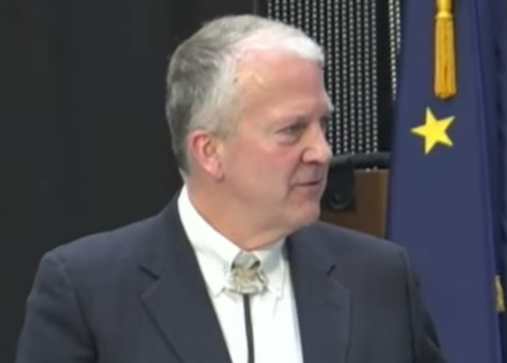No one who knows gaslines disagrees with this point – a gasline that delivers a vastly higher volume of gas does it more efficiently, for less cost.
Alaska is in the middle of a shell game with a lot of potential, but not perfect, prospects. Some people say “just pick something.” Here’s why that’s not so easy, and picking the wrong project can harm the state with high gas prices.
|
|
The big line, potentially from the North Slope to Valdez will get us, by far, the cheapest in-state gas and – get this – actually make our power costs low enough that we can have affordable heat and electricity and attract business to move to Alaska. But, as you know, that is stuck in negotiations, and the silent, unreported threat from oil companies that they will not put their vast reserves of North Slope gas into a gas pipeline unless they get what they want in oil and natural gas tax concessions. They don’t say that publicly. They do say that privately. And to be fair, I have always supported a large gasline option if we can pull it off, and agree with the Governor’s efforts to move that project forward.
Why? Not only because it produces the cheapest gas, but because it would produce revenue for the state. We use a little less than ¼ of a bcf a day of natural gas in Alaska, and a big line will provide for in-state use and then export another 2 to 3 bcf per day to Asia so we get needed state revenue. The prices in Asia for liquefied natural gas are good now, and seem to make the project economic.
Because the large volume line requires so much gas, it will require new exploration and jobs on the North Slope, and when companies find gas, they’ll find oil too. Oil that might not be economic to produce on its own can very likely be economic to produce if it is in a gas field that gets developed. That is, a big pipeline might be the best way to get new oil into the pipeline. Don’t take my word. That’s been the expert testimony – at least when the state used to hire stronger experts who weren’t just trying to push the Governor’s $1 – $1.5 billion a year oil tax giveaway (the Governor has kept the better experts on contract, but kept them from speaking to legislators in an effort to push his oil tax bill through).
Can we wait? Well, studies show there are great stores of natural gas in Cook Inlet – but no one explores for it unless gas contracts are coming due – so we never know what will be found when we need it. Why? No one will explore for natural gas until they know they have a customer.
But that, and a new plan we have to truck natural gas to the Interior from the North Slope to solve the Interior’s high gas prices can buy us time to try to see of the big line will work. If we give the Governor some negotiation time and that fails, then we have to move to worse options.
There is also a bill in the Legislature to deliver a small fraction of the amount of gas the big pipeline will deliver. That makes sense if all our other better options fail. BUT, it contains some BIG negatives that need to be fixed.
First, the proponents who are writing it demand that once we vote for it this year, if we do – the Legislature never gets to review the project again to see what the price of gas is that will be delivered to Alaskans. It could be double what we pay now. It could be double what a big line will produce for Alaskans. And, in case you didn’t know it, you, as a consumer, will be bound to that high price for 25-30 years – the standard term a pipeline owner requires from consumers in order to get them to build a pipeline. Before signing you up for a gasline, I want to make to make sure you get affordable gas, and that you don’t have cheaper, better options. Blindly moving ahead and abdicating the legislature’s role to review the project for whether it meets the public interest isn’t a good move.
Also, the bill says the pipeline owner and gas producers (ConocoPhillips, BP and Exxon) get exempted from the normal rule that the state regulatory commission regulates the price the pipeline can charge to ship gas – an important consumer protection. Pipelines are entitled to reasonable profits, not excessive ones that get passed on as higher prices to consumers.
There are other problems with the bill. Three years ago it came with an estimate that its gas would cost three times what we pay now, and then last year came with a smaller (but high) price estimate for delivered gas. This year, for essentially the same pipeline capacity (½ to ¼ a bcf of gas per day), the bill comes with a much smaller price. That all seems suspicious, and those prices are all early, unreliable estimates. In the end I cannot sign on to a bill that lets corporations, and not the Legislature, determine whether the price of gas for a pipeline serves the public’s interest.
I want planning for this project to move forward, and negotiations for a preferable big pipeline to move forward. But I don’t want the poison pill provisions in the small pipeline project. Moving ahead on all options will get us to a place where we have a clear picture of what options will best serve Alaskans.
As always, call or email if we can help.
My Best,



